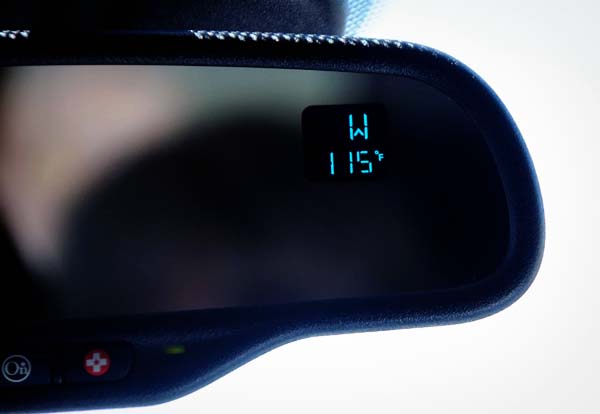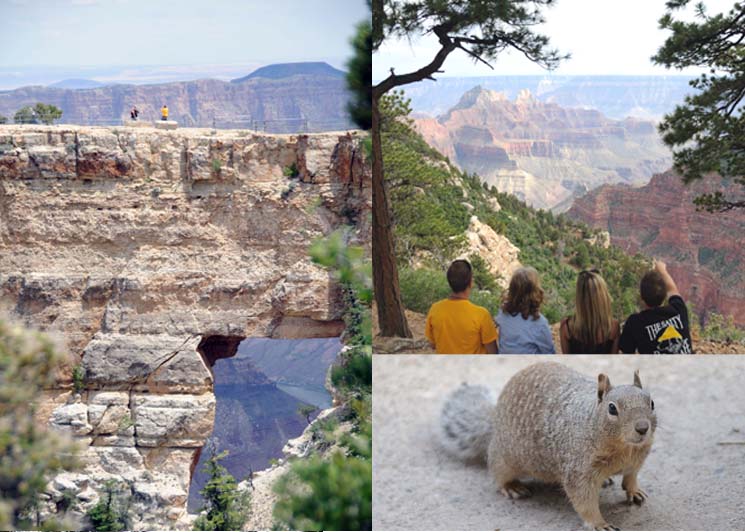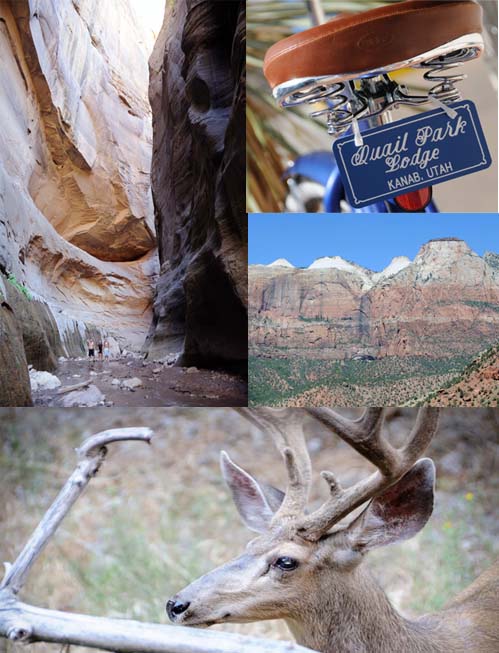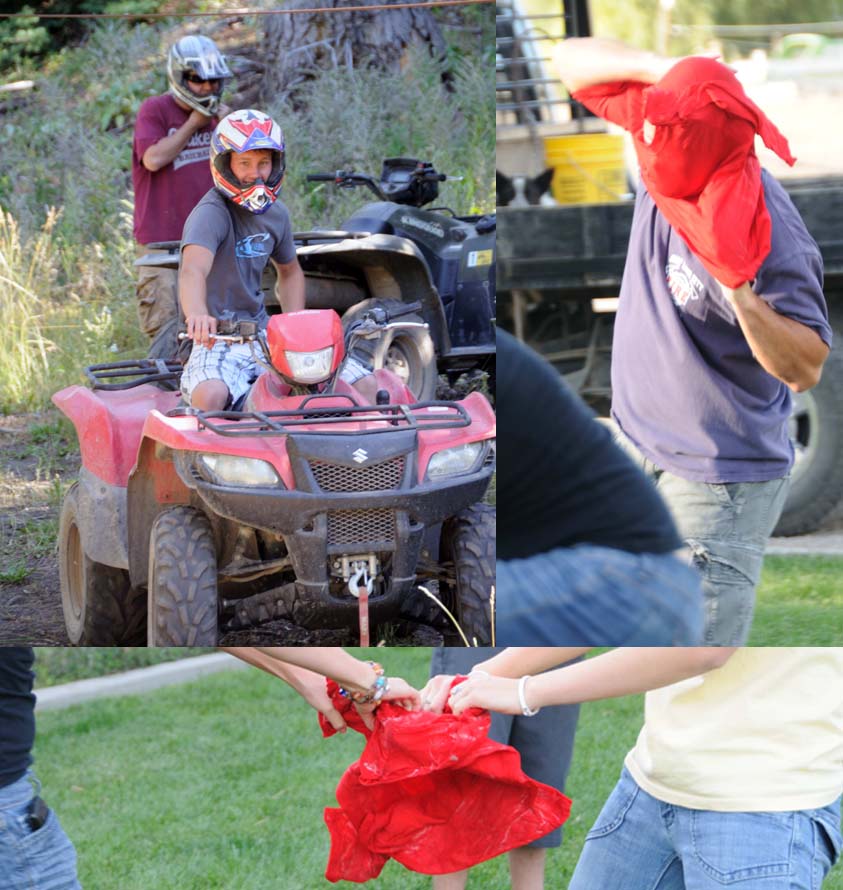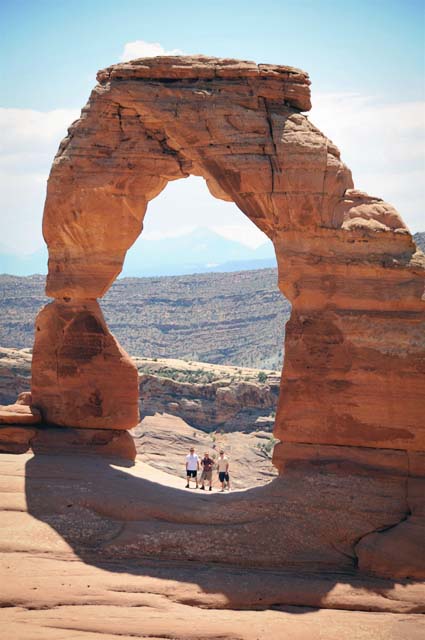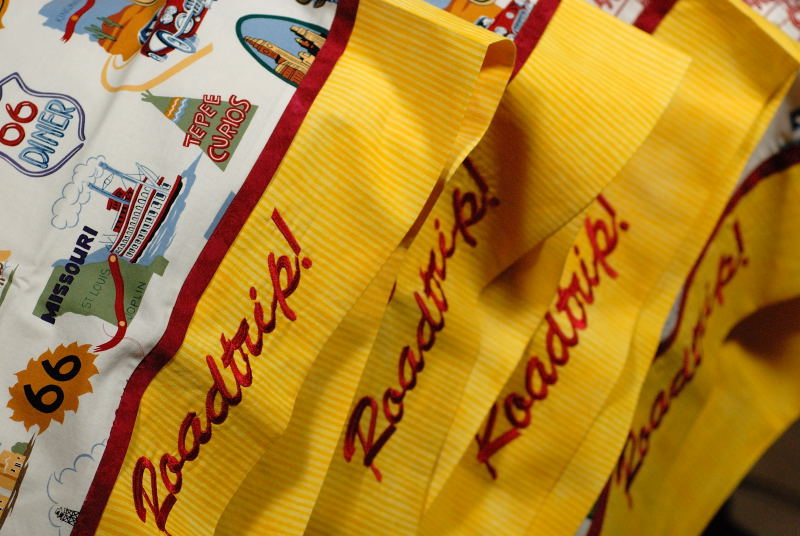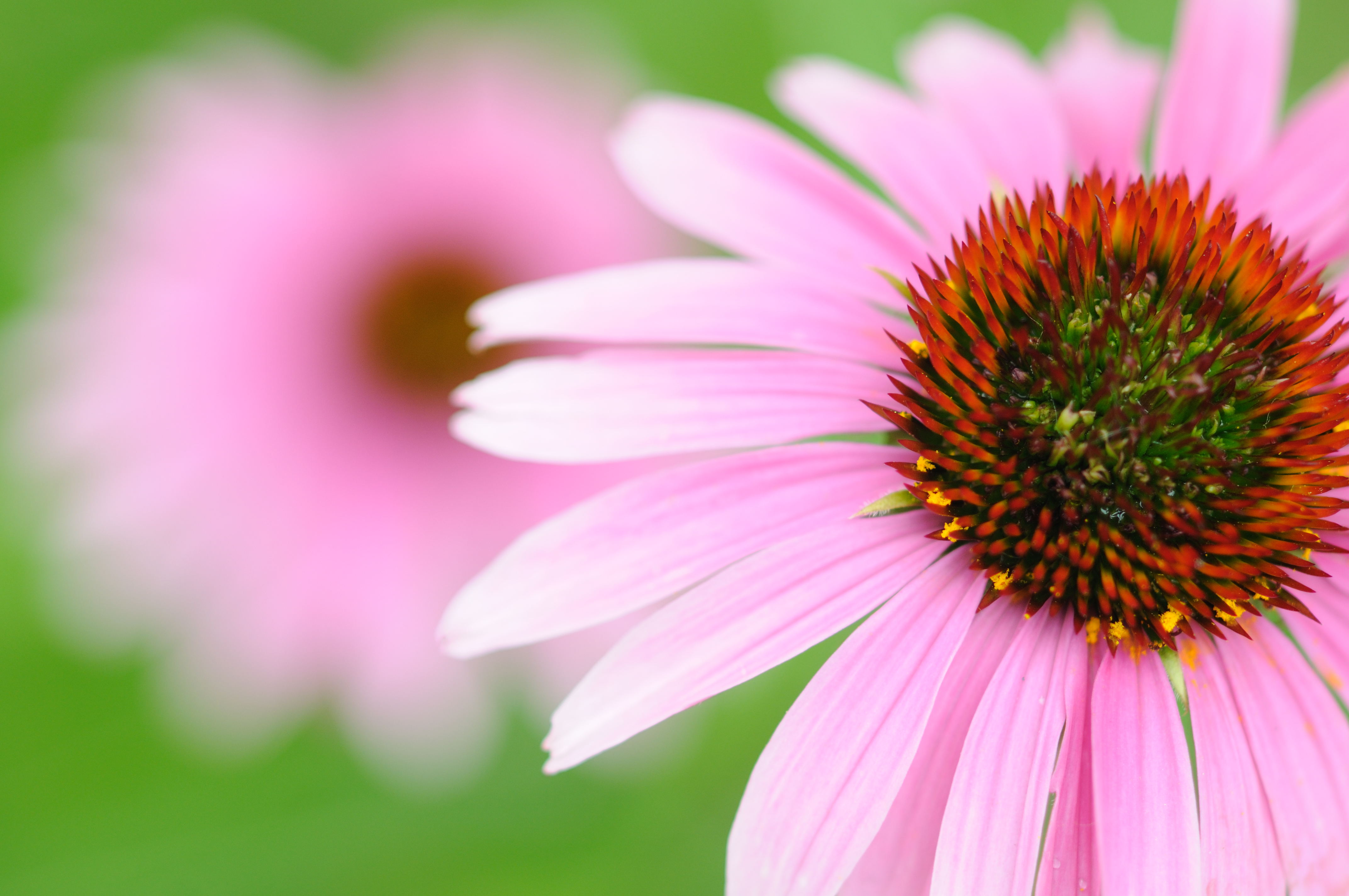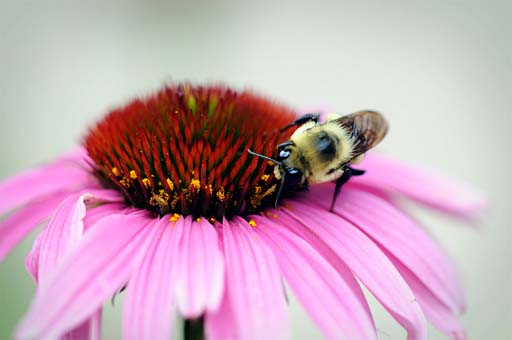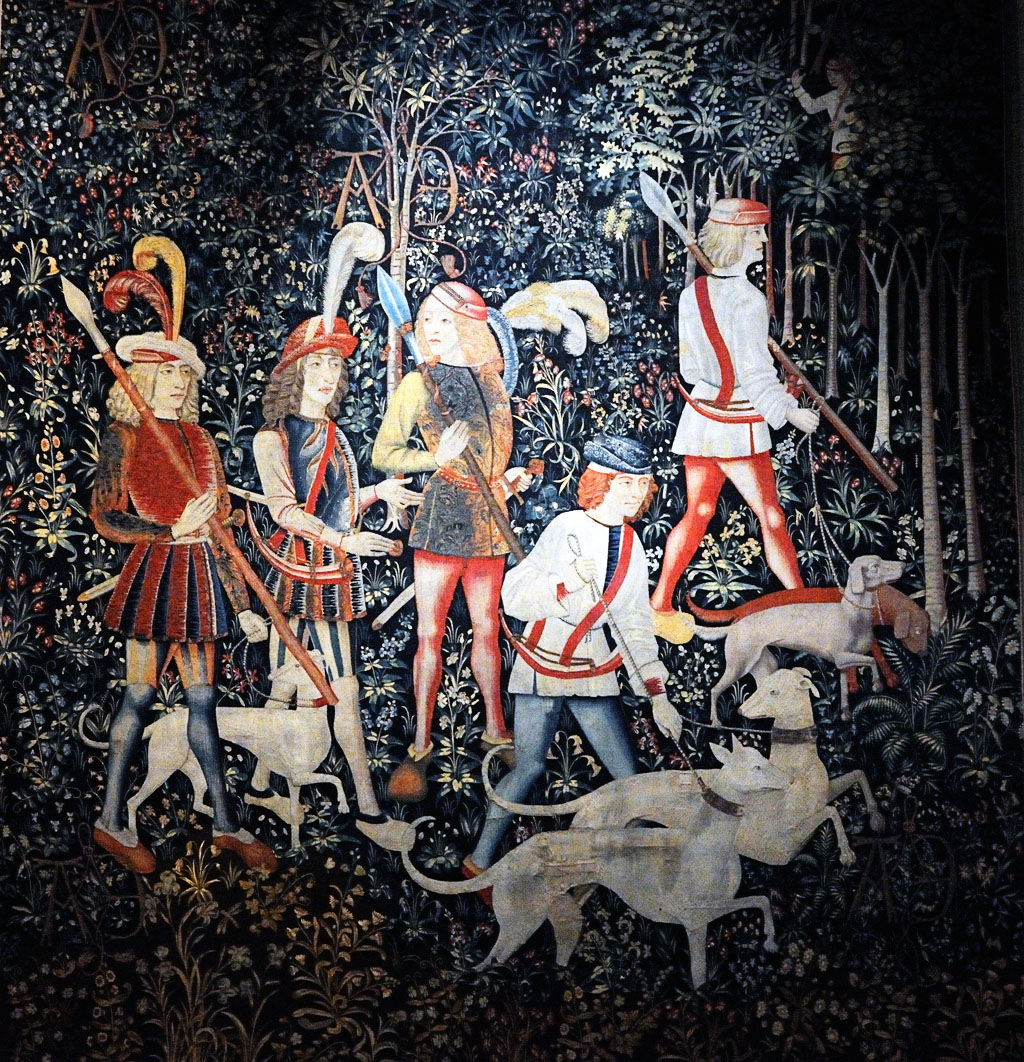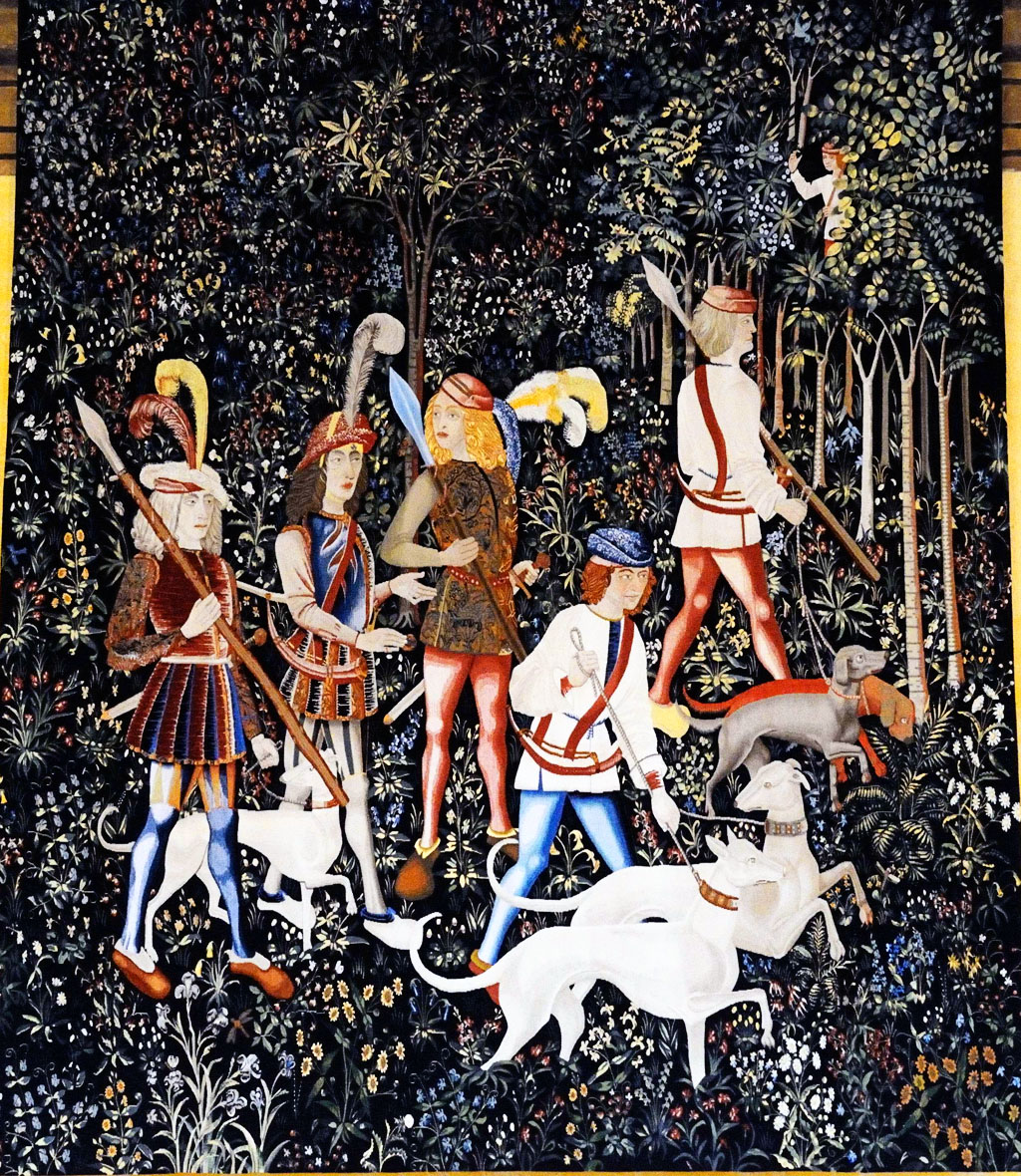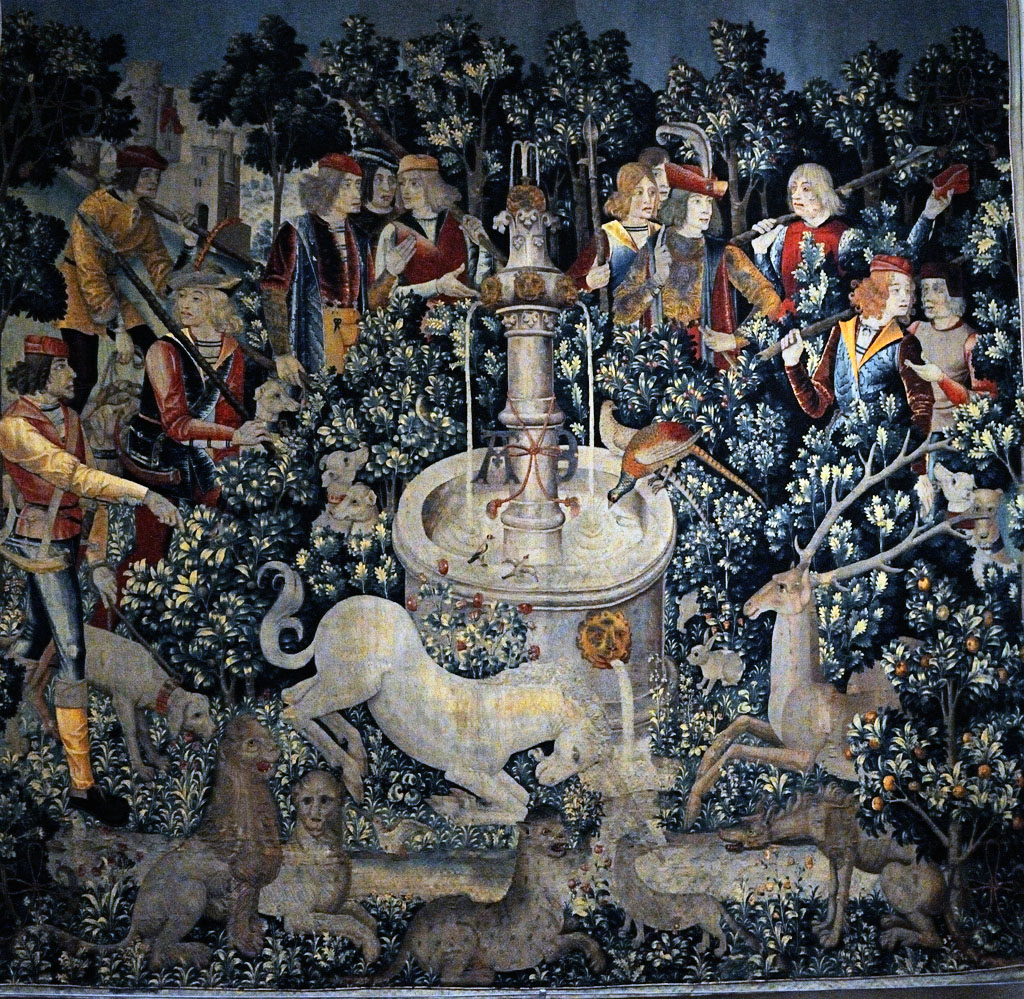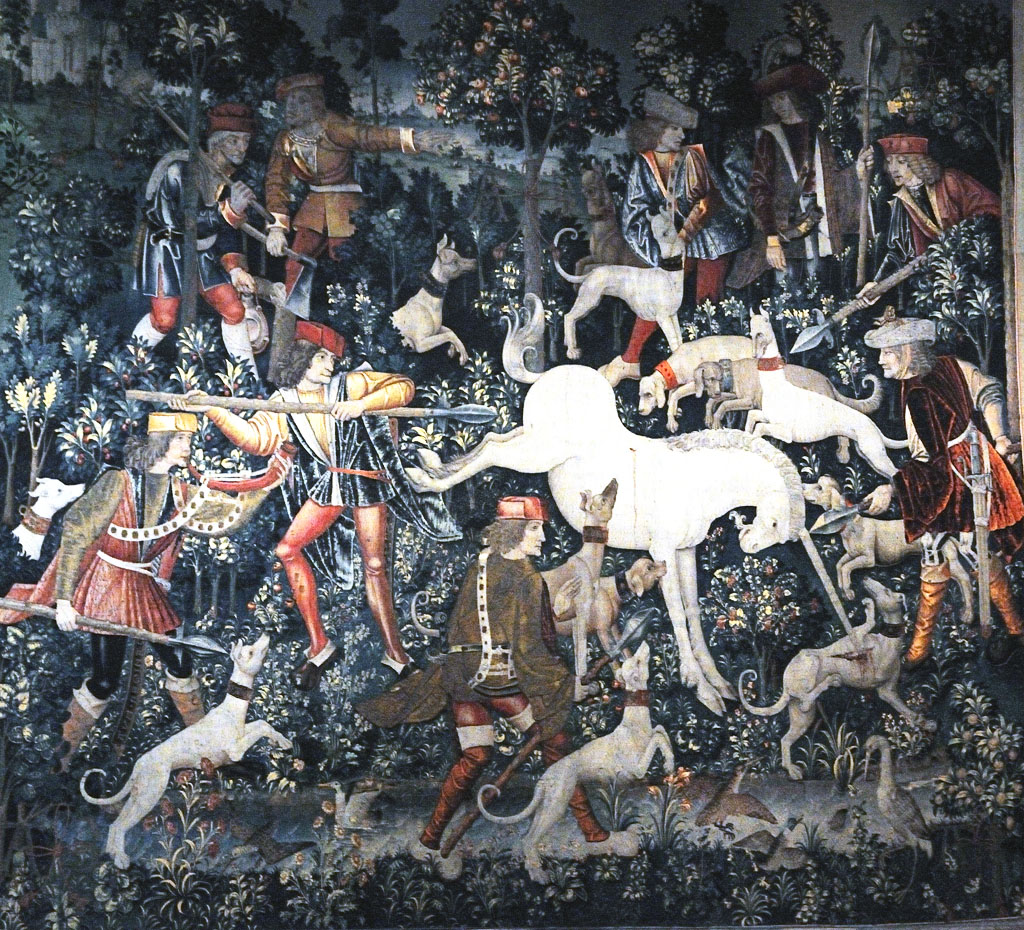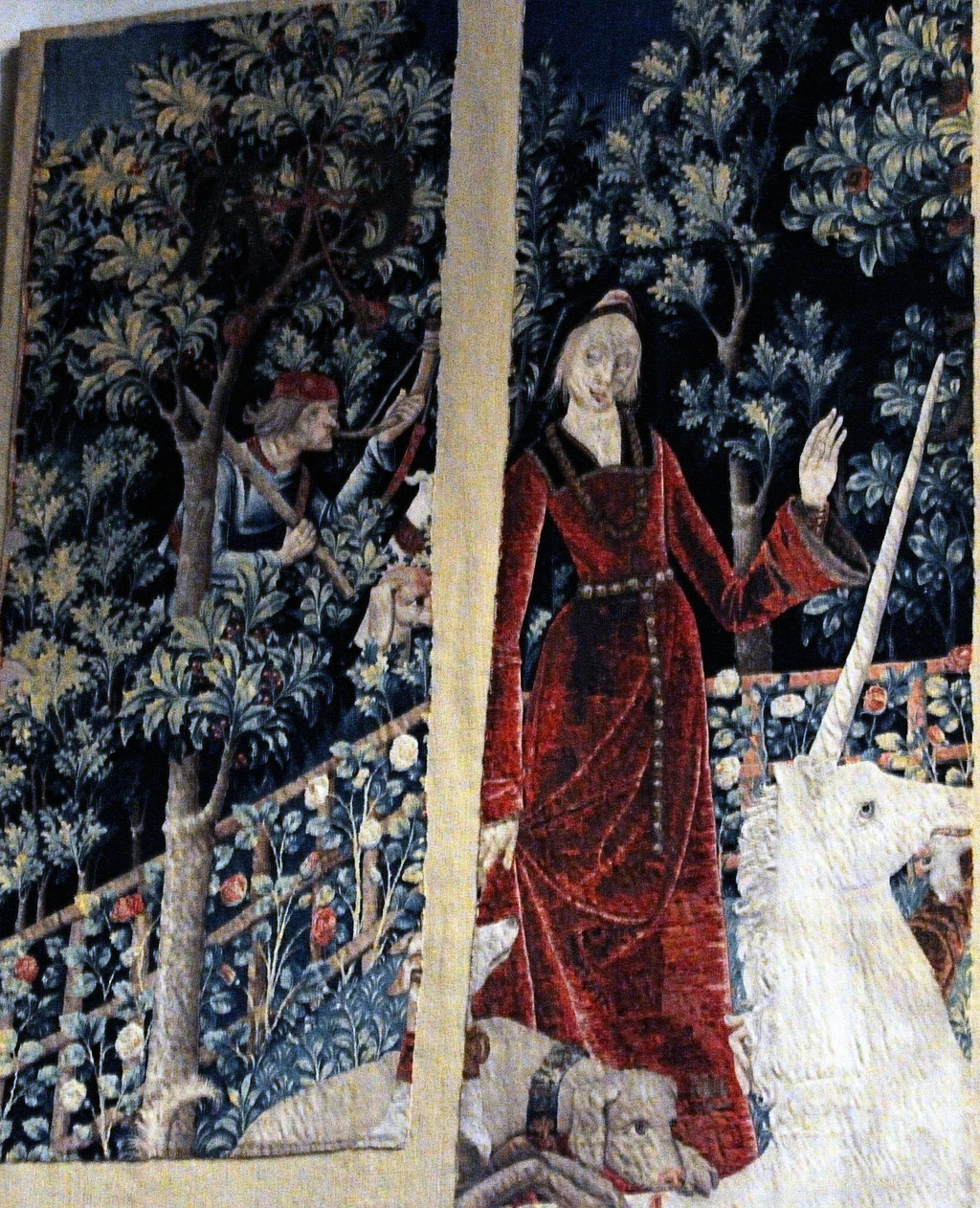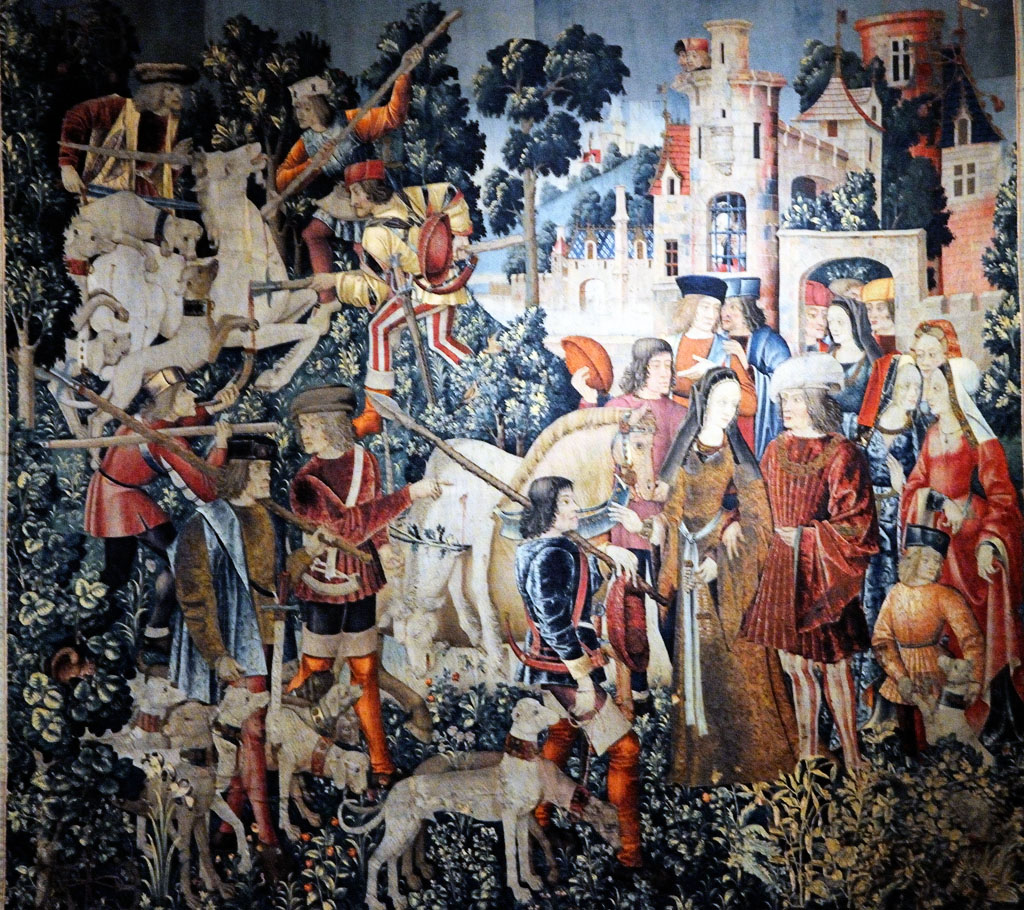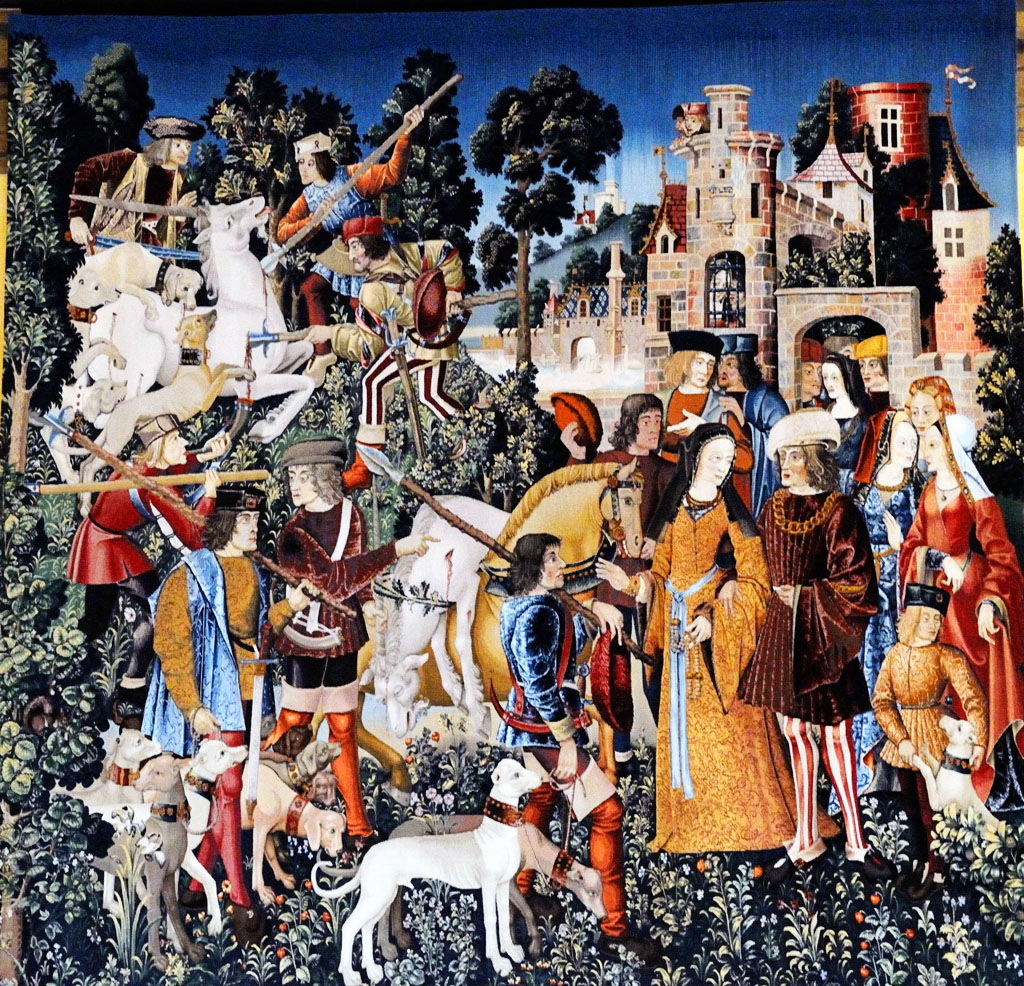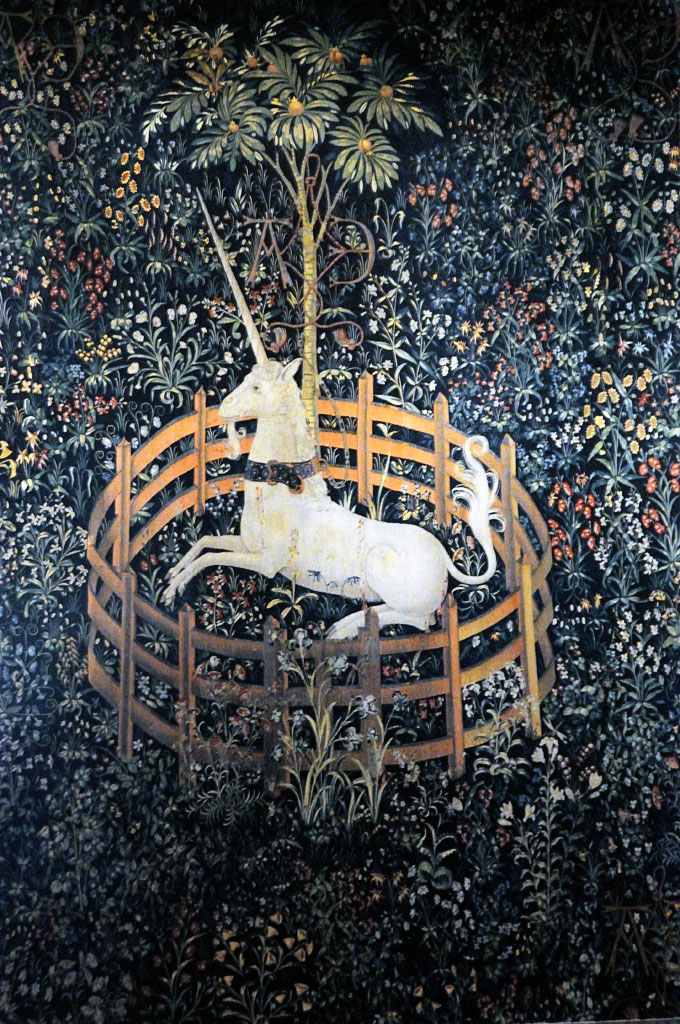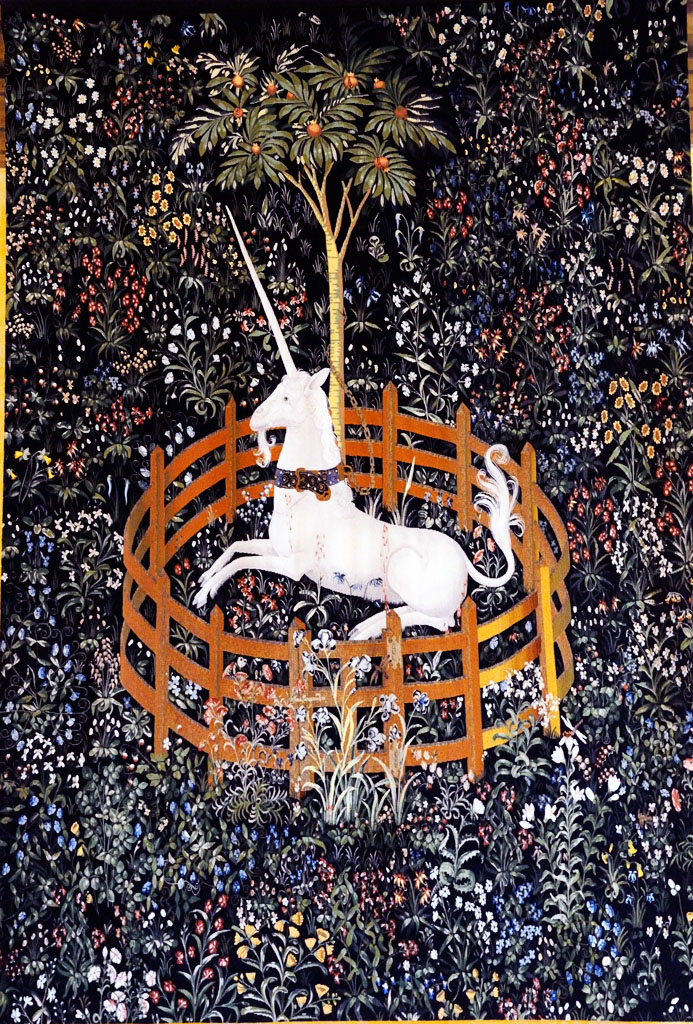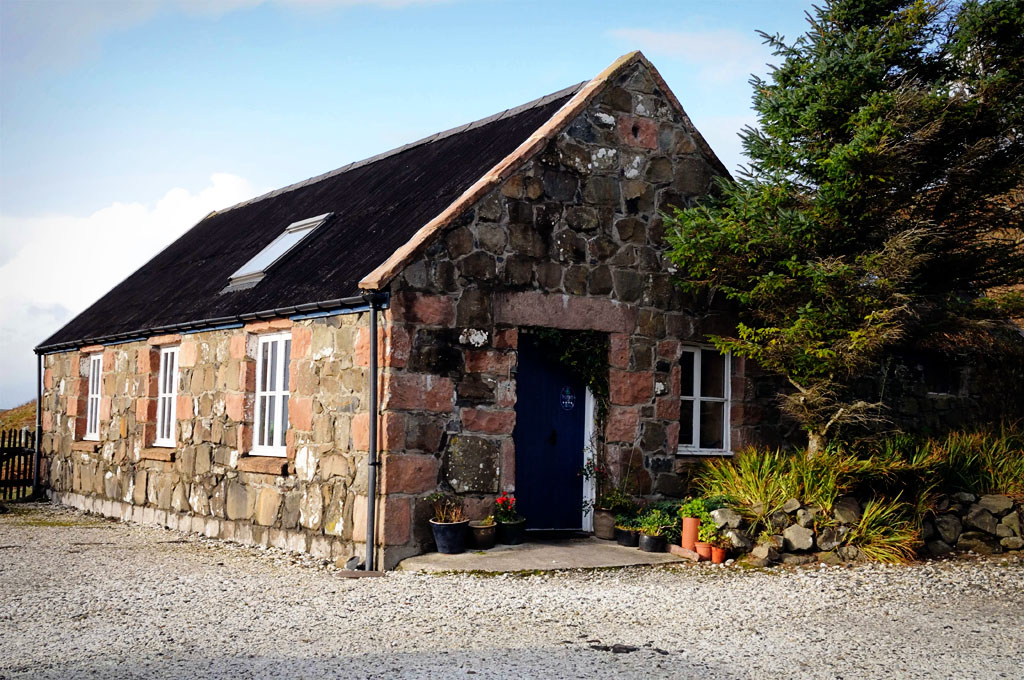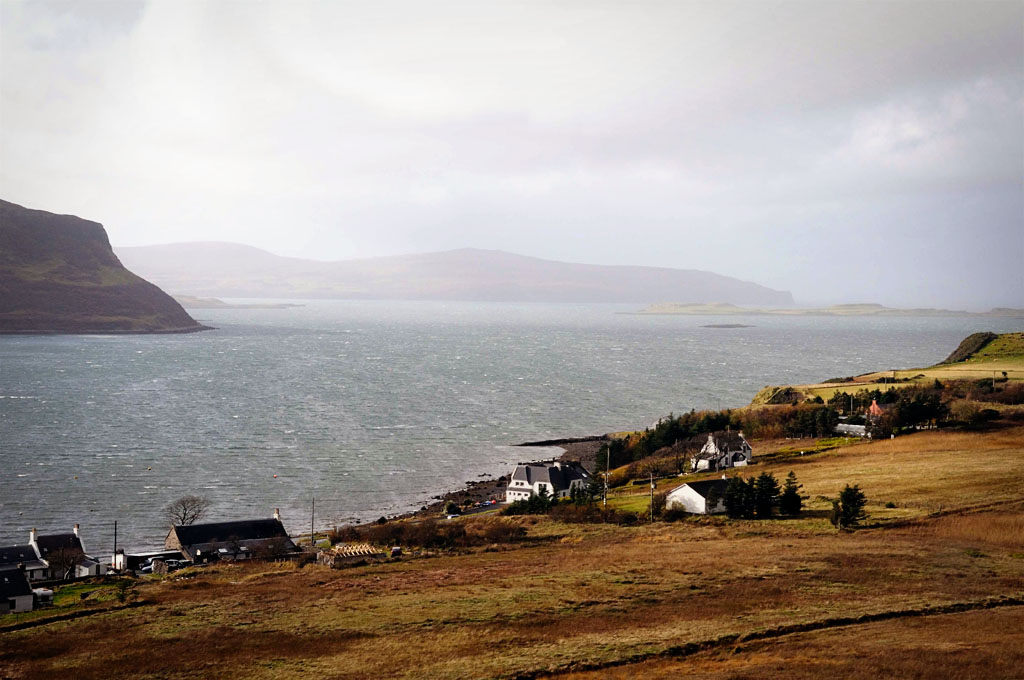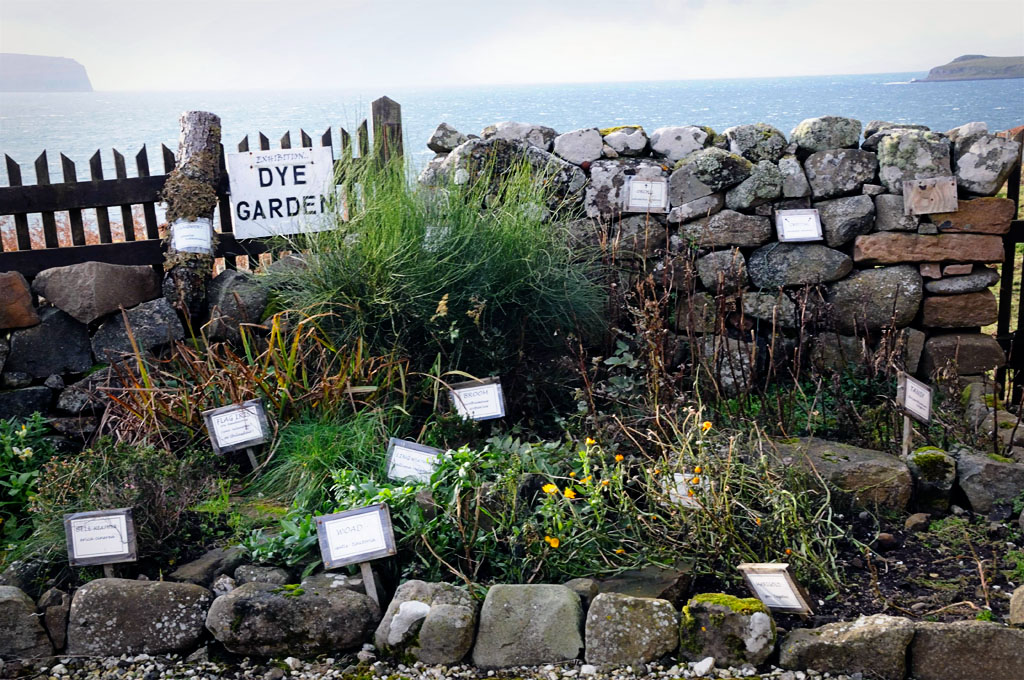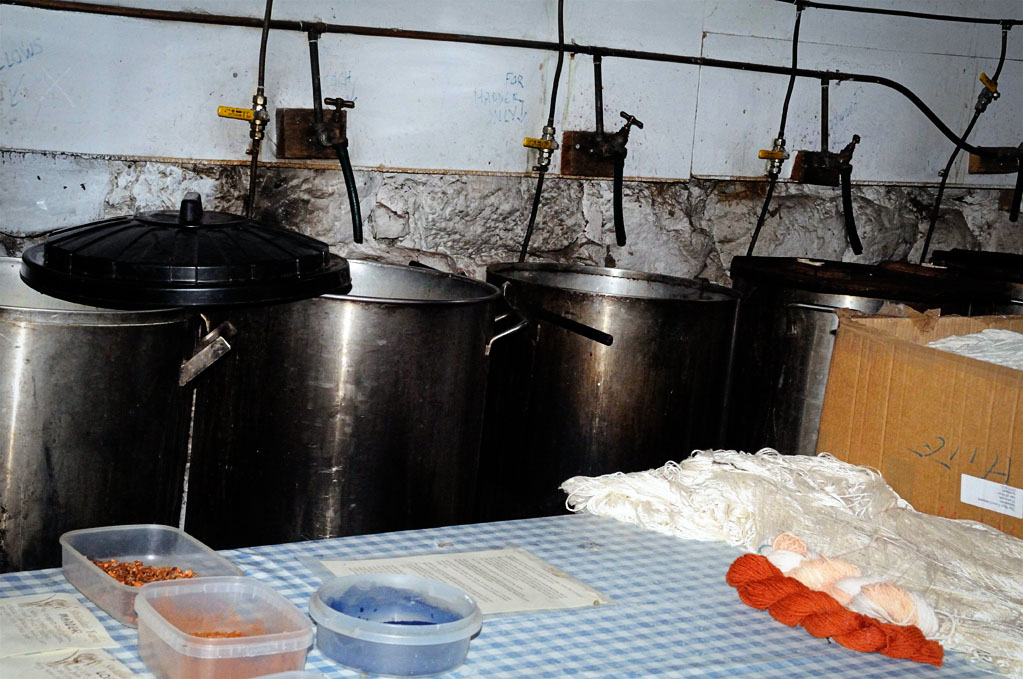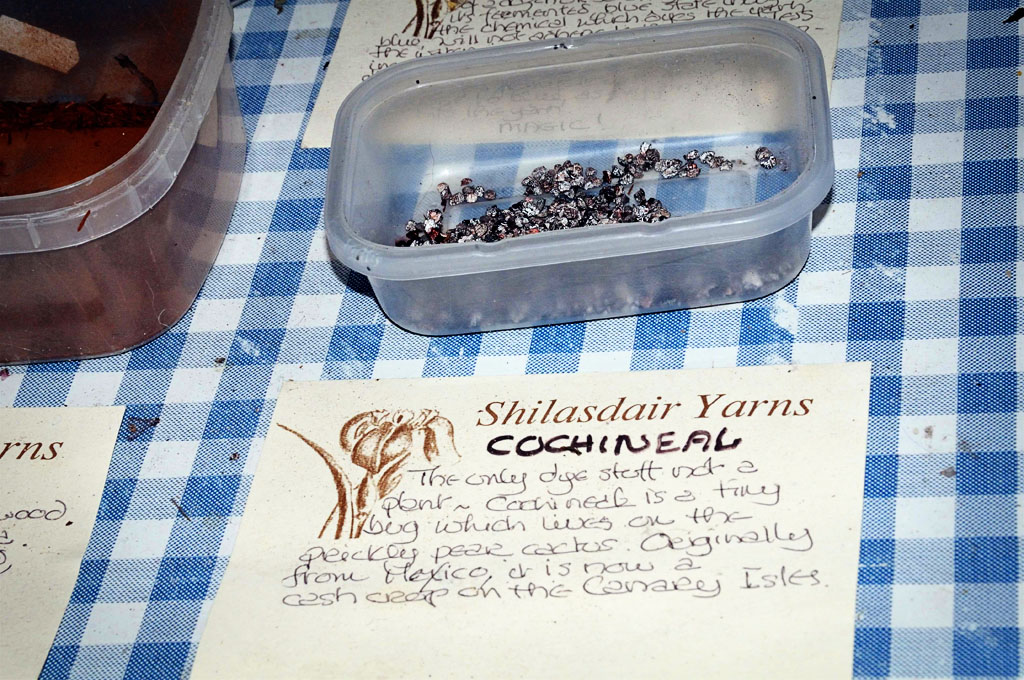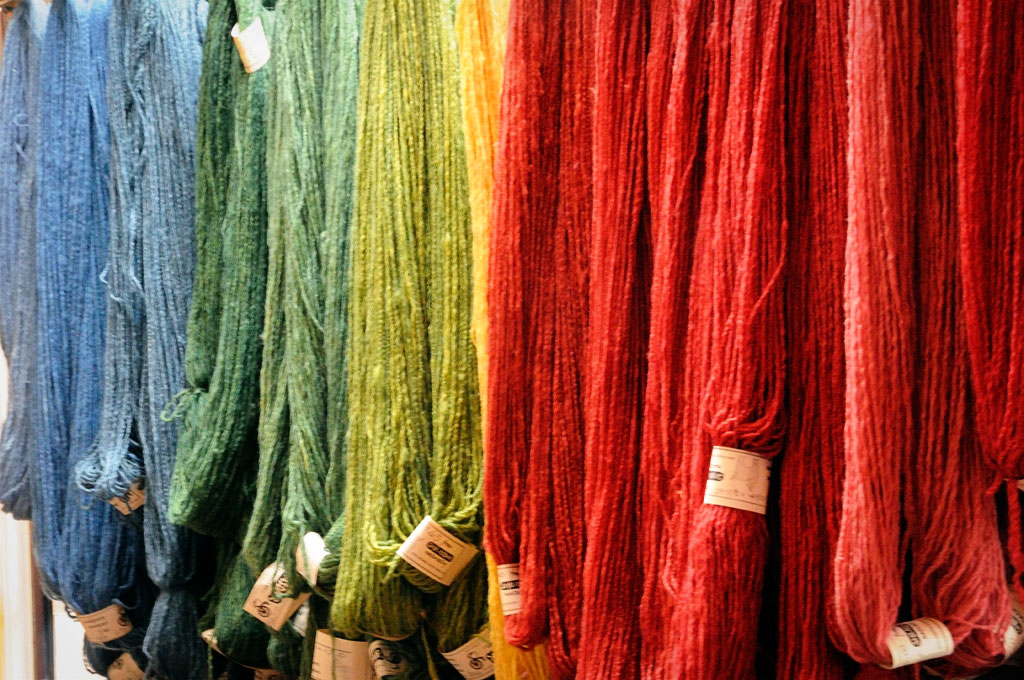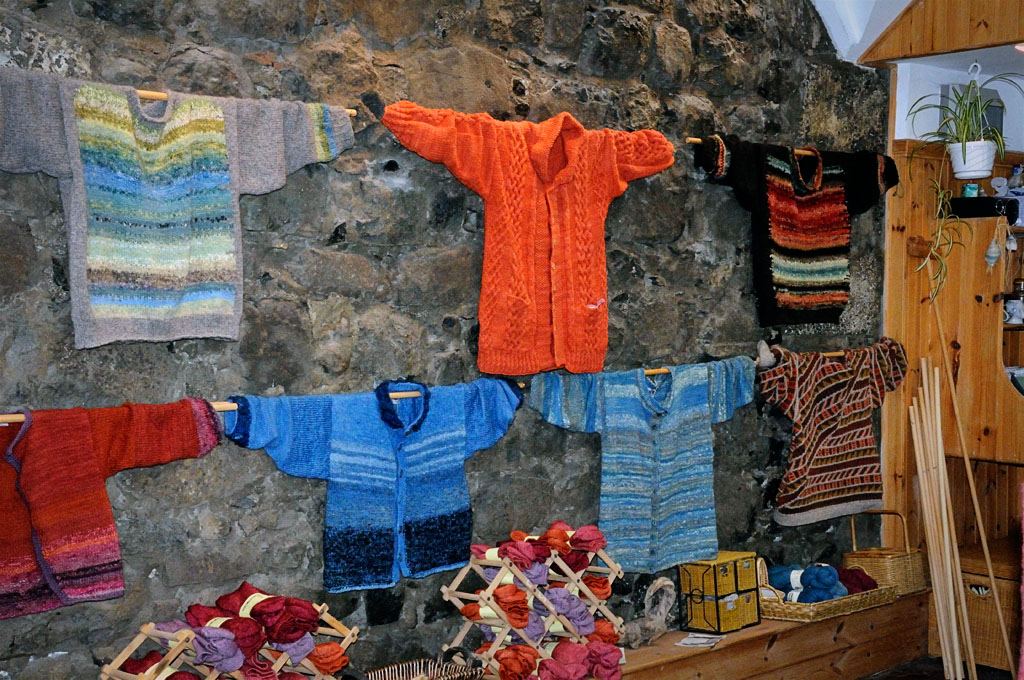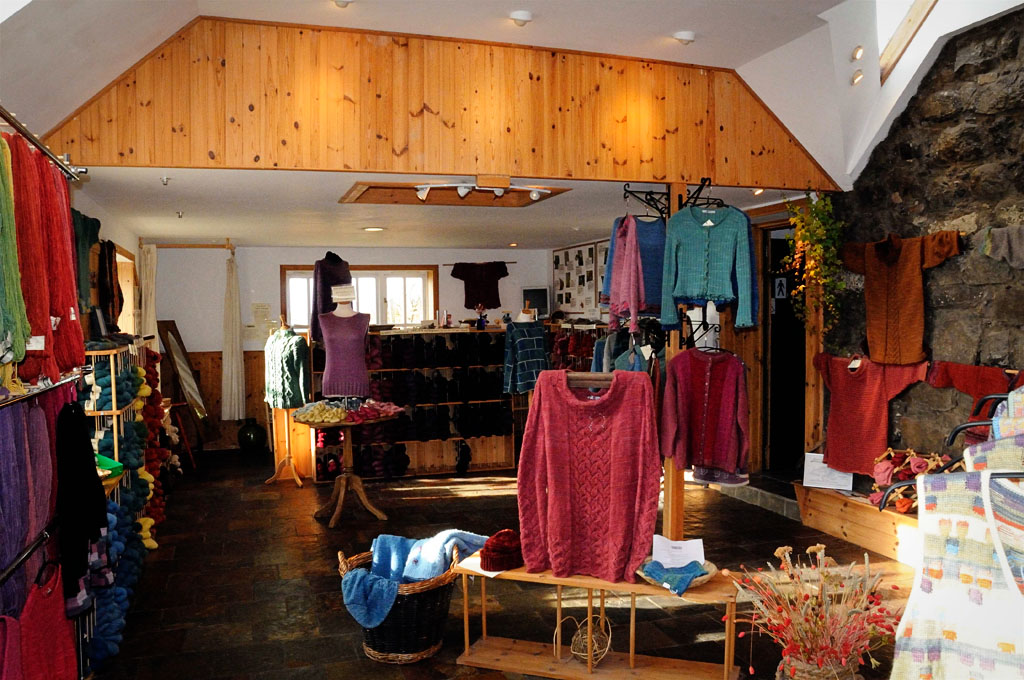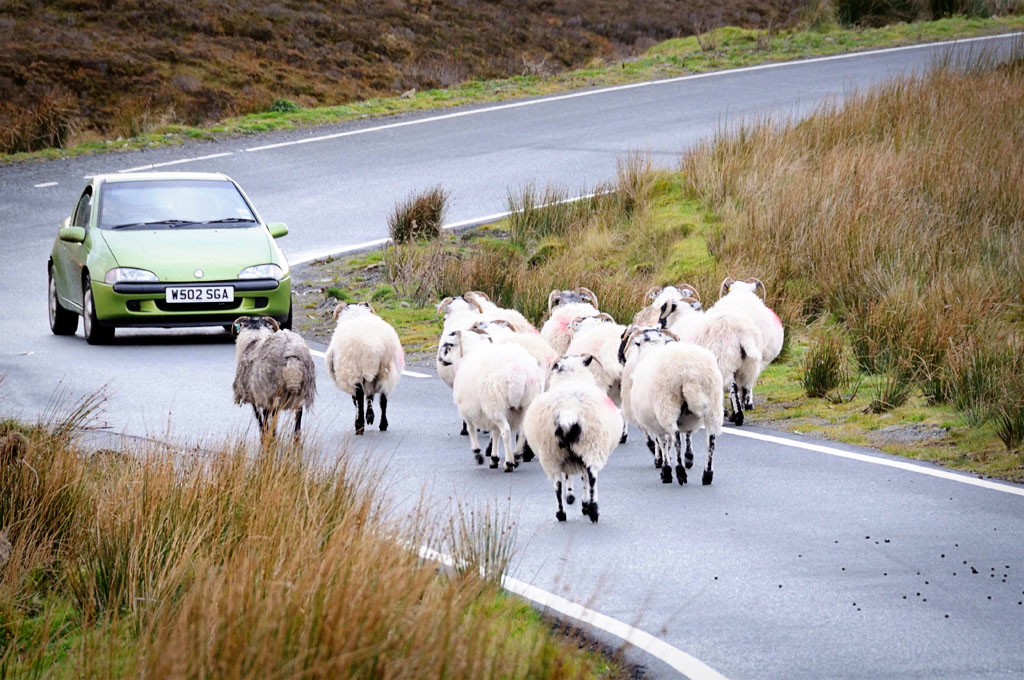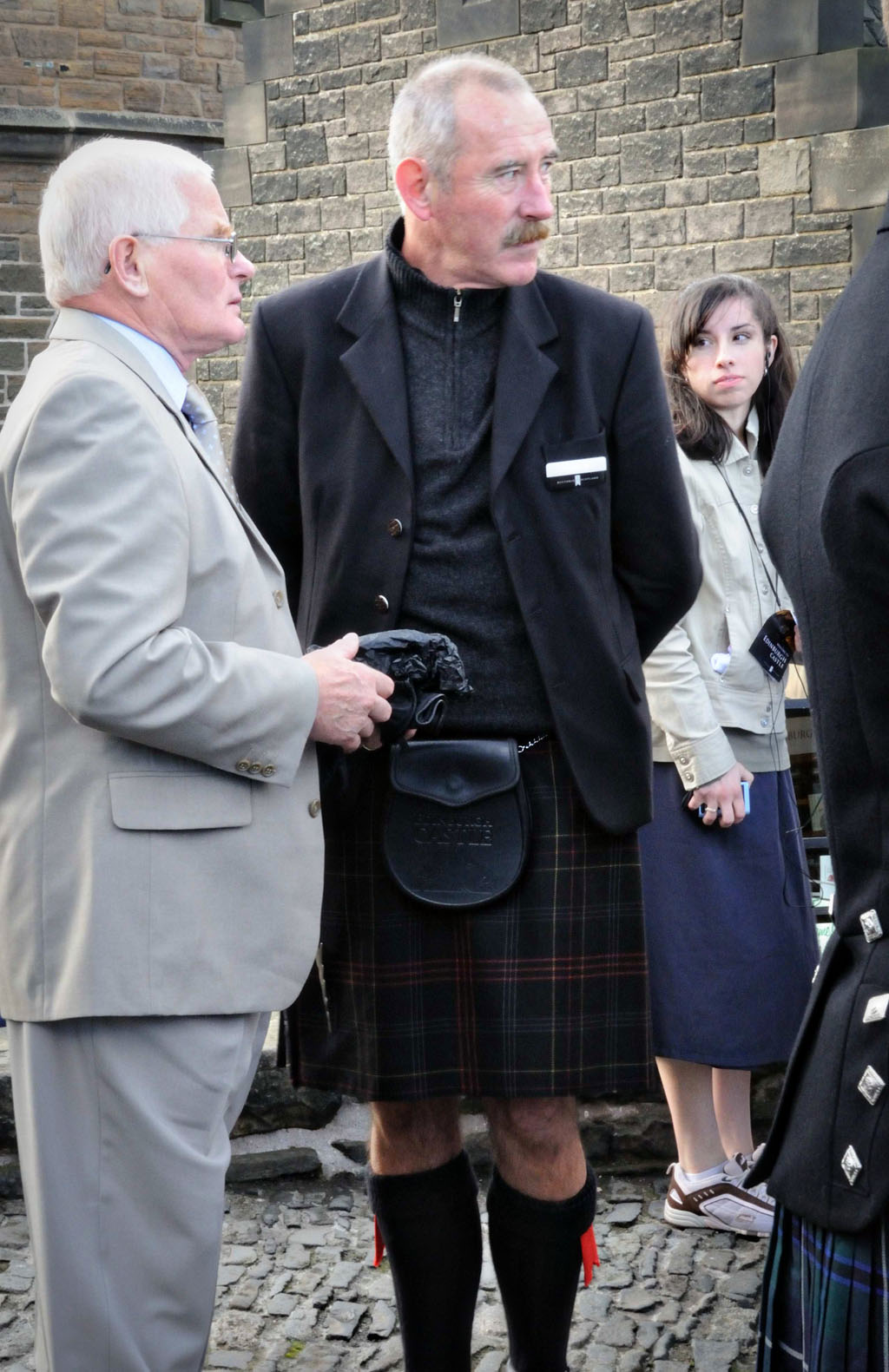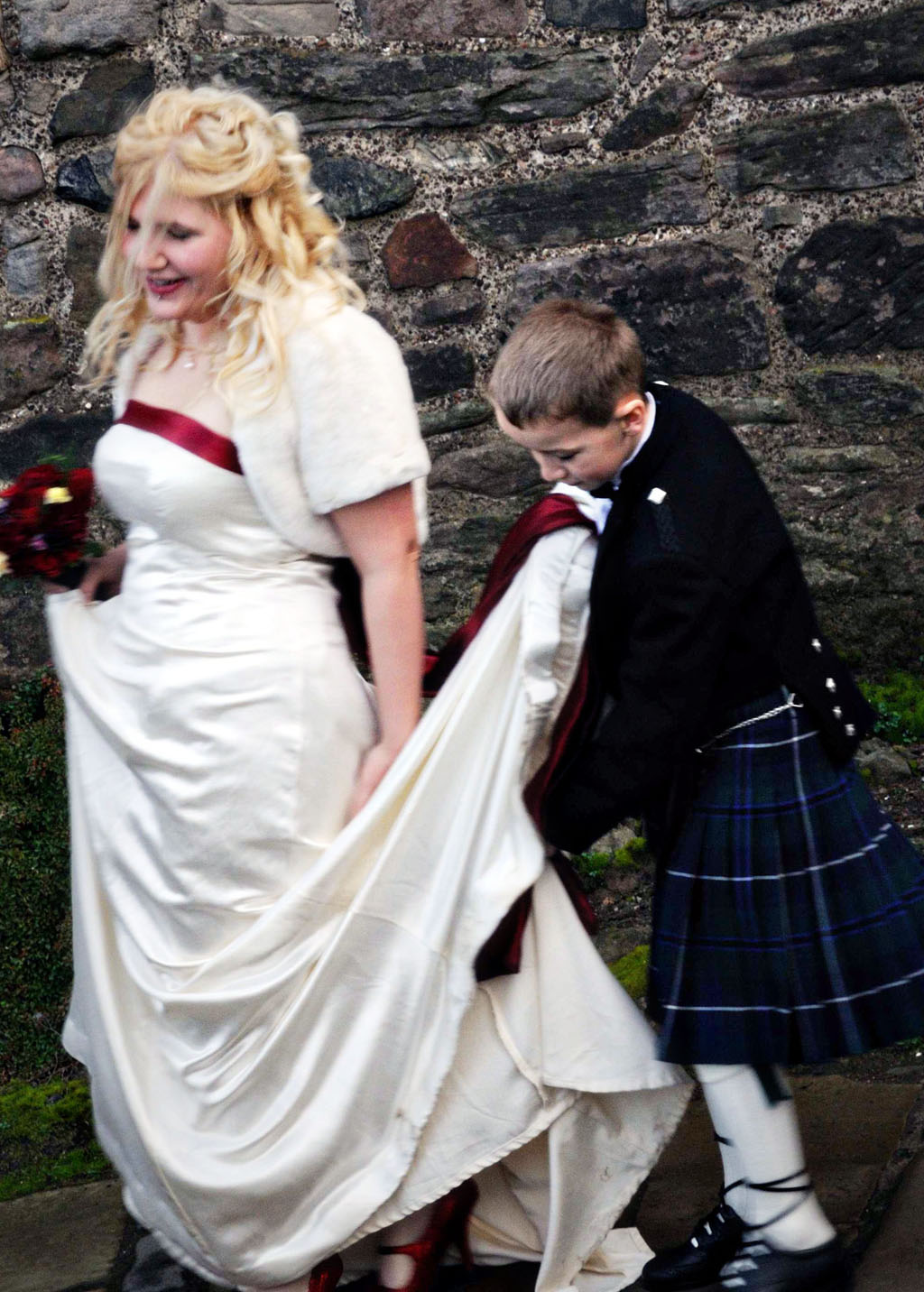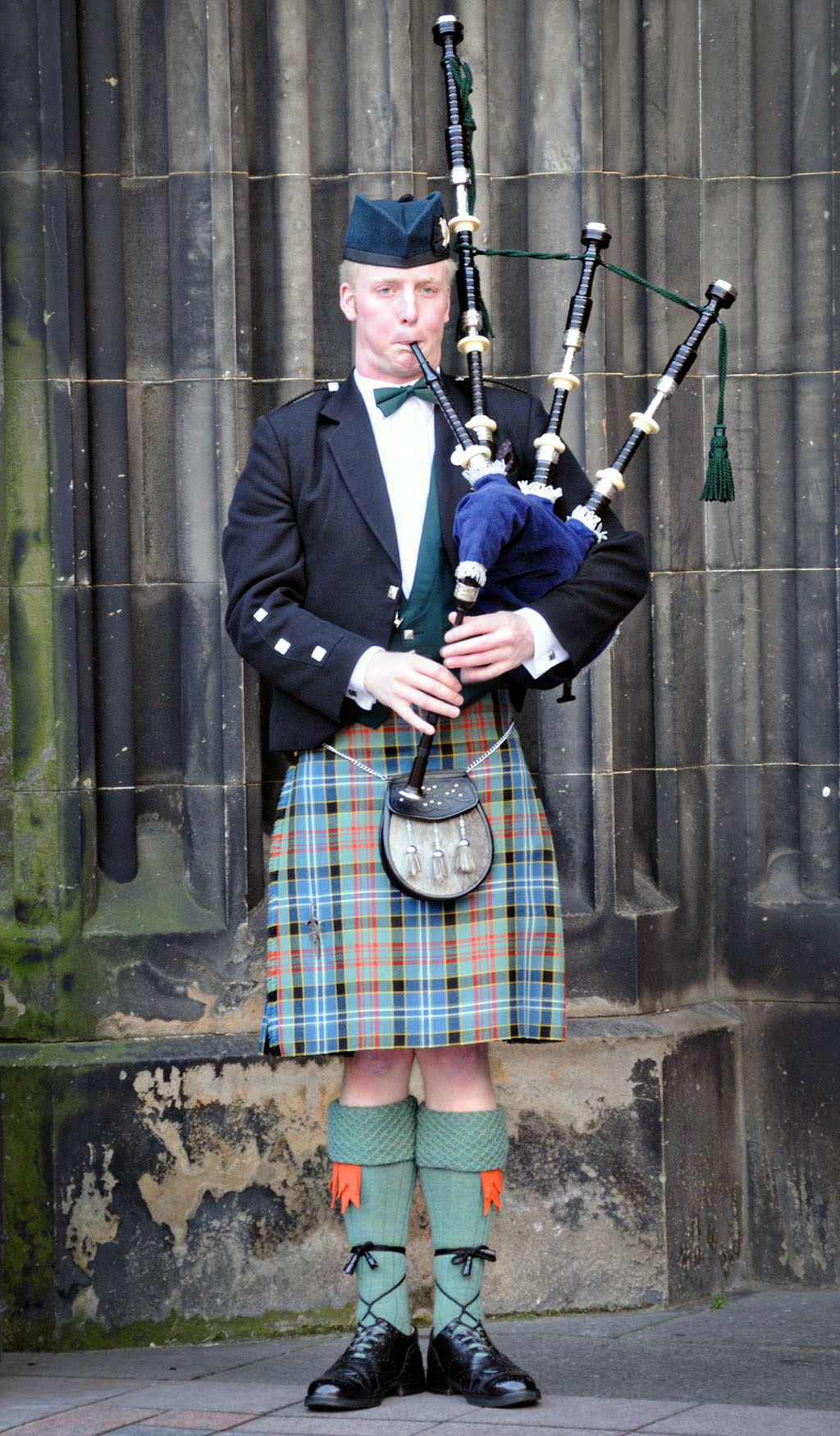WARNING: Long Post Ahead.
A little over three years ago, when MeMum, Big Daddy, Aunt Annie and I went to Scotland, we visited the impressive and beautiful Stirling Castle. As we were touring the castle grounds, we were completely surprised to find a tapestry studio where the famous Unicorn Tapestries are being recreated. Have you heard of the Unicorn Tapestries? The Unicorn Tapestries are considered to be the finest surviving set of medieval tapestries in the world. There are seven tapestries in the collection and they tell the story of a unicorn hunt. The project to recreate them was begun in 2002 and is expected to last until 2014. As of last fall, tapestries 1, 6 and 7 had been completed.

When we were there, we were told that there were three main weavers and at least one of them works on the tapestry every day of the year, except for Christmas and one or two other days that I can’t remember. The studio is fairly small and visitors are expected to be quiet so that the weavers aren’t disturbed. When we visited, we were the only ones in the studio, and the docent in the room allowed me to take the above picture of the weaver working on tapestry number 6. (This was pre-digital camera for me, so this is a scanned photo.)
I can’t even begin to describe the amazing weaving process. Behind all the threads on the loom was a pencil drawn version of the tapestry. At the far end of the studio, hanging on the wall, is a blown-up picture of the original tapestry. The level of detail is amazing and it was so fascinating to watch the weaver tuck the threads in and out and then tamp, tamp, tamp them down with her little stylus. I was also fascinated by the fact that they weave the tapestry sideways — the right side of the tapestry as pictured on the wall, is running along the floor.
We learned that the original tapestries are hanging at the Metropolitan Museum of Art in The Cloisters in New York City. And the whole reason I’m telling you this story is because when I went to NJ last week, I managed a quick trip to the Cloisters before my plane left on Friday.
Tapestry #1: original on left, reproduction on right.
I was so excited to see the tapestries, I think I almost cried. They are so amazing and the colors are still so vivid. The tapestries are believed to have been created in the Netherlands, between 1495 and 1515. The first known record of their existence is from 1680 when they were part of the inventory of the belongings of a French Duke.
Original tapestry #2 on left, Original tapestry #3 on right.
Because of the differences in style of some of the tapestries, it is believed that the tapestries have been created as part of three different sets, The Three Hunts of the Unicorn. Tapestries #1 and #7 are part of The Hunt of the Unicorn as a Lover, tapestry #5 is part of The Mystic Hunt of the Unicorn and tapestries 2, 3, 4, and 6 are part of The Hunt of the Unicorn as an Allegory of The Passion. It is also believed that there could be other tapestries that are missing, particularly from the first two hunt series.
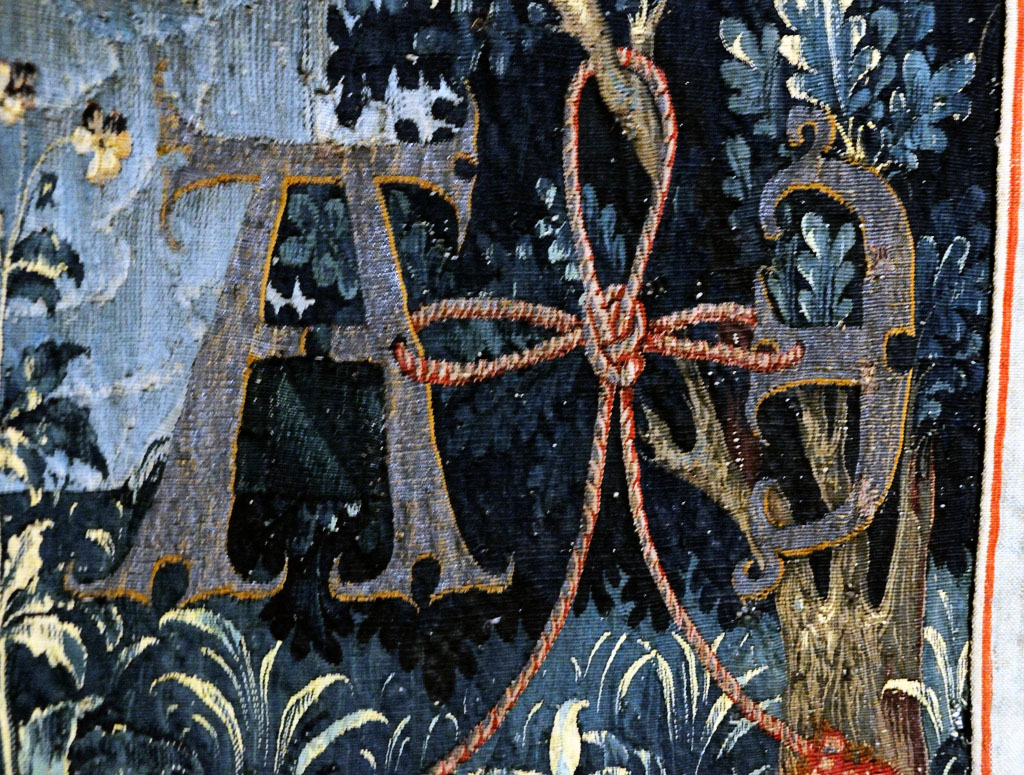
It is unknown who the original tapestries were created for, but they all have the letter A with a reversed E that appears frequently on the tapestries, which leads to the theory that they were all created for the same person. Sometimes the letters are in corners, sometimes in the middle, and as you can see below, they even appear in the dogs’ collars.
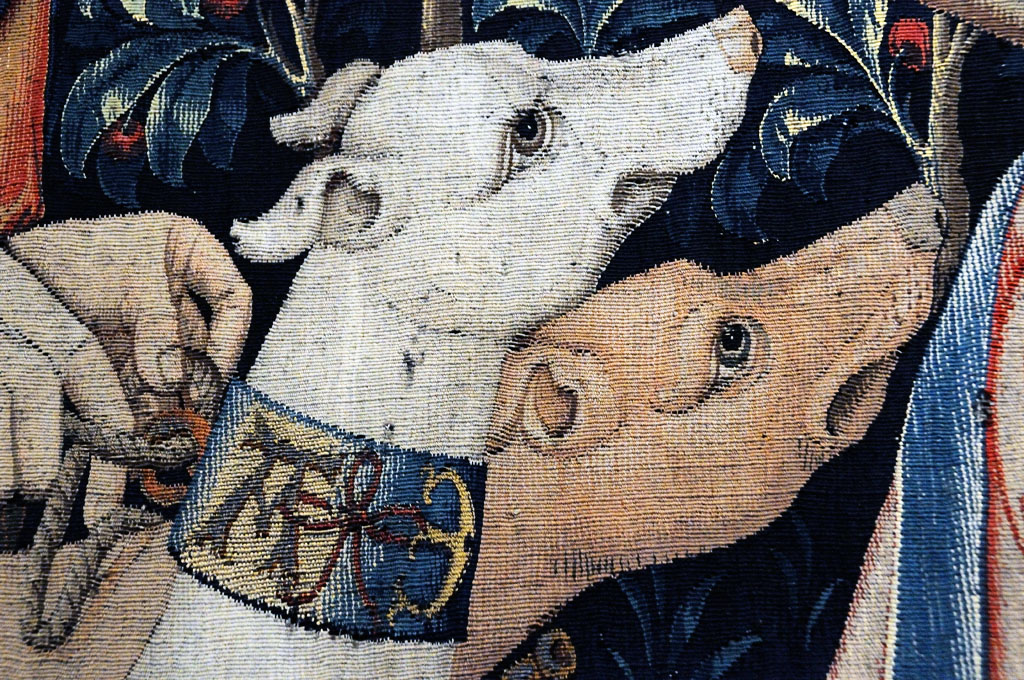
It is also believed that symbols of aristocracy were contained in the blue skies of the tapestries and that they were cut out in order for the entire tapestries to escape destruction during the Reign of Terror (1793-94) of the French Revolution. If you click on the picture below, you can see applique stitches where the people of the castle (from tapestry #6) have been stitched to a new sky.
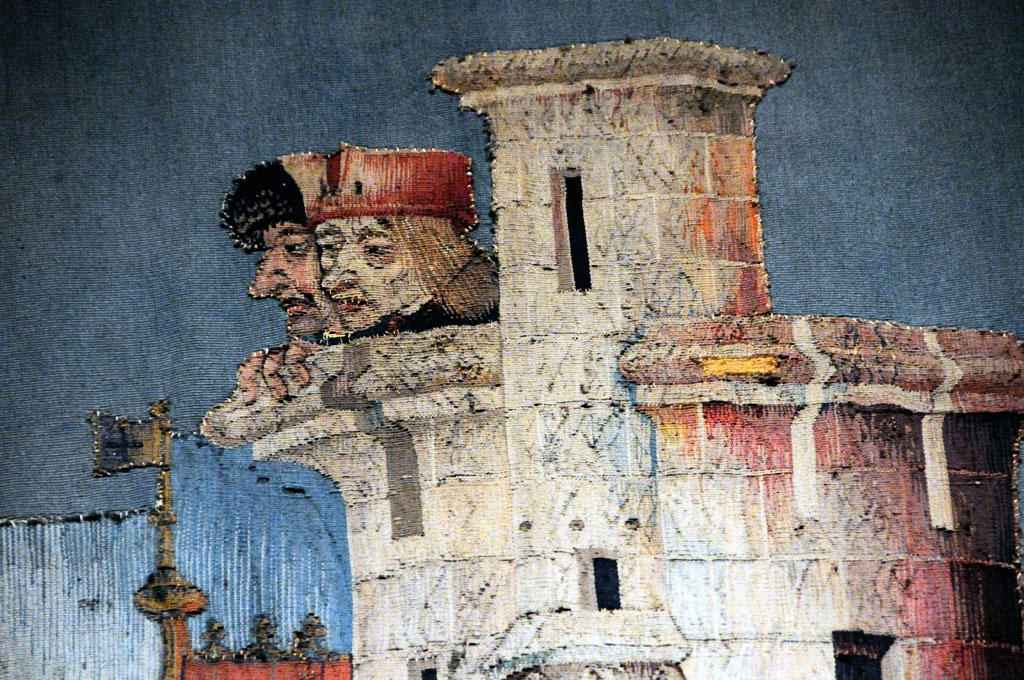
During the Revolution, populist mobs looted the chateau and took the tapestries where they remained out of sight for several generations. It was rumored that they were used to cover espaliered trees and protect potatoes. In the early 1850’s a peasant’s wife came forward with news of some “old curtains” that were covering vegetables in the barn. Can you imagine? It’s amazing that they have managed to retain their pretty, bright colors.
Original tapestry #4 on left, Original tapestry #5 on right.
Perhaps their life in a barn would explain the huge missing sections in tapestry #5. The pictures are misleading as to the size of tapestry #5 — the fragments are actually much smaller than any of the other tapestries. I can’t wait until the weavers get to tapestry #5. Will they recreate the sections just as they are, or will they make assumptions and create the missing parts of the tapestry?
Tapestry #6: original on left, reproduction on right.
When TheManoftheHouse and I went to Scotland last year, I really enjoyed seeing the progress that had been made on the new tapestries in 3 years. Tapestry #6 that had been on the loom, was now finished (it took 4 years to weave) and hanging in the Chapel Royal at the castle.
Tapestry #7: original on left, reproduction on right.
Tapestry #7 is the most famous of the tapestries. You can definitely see that it shares a similar style to Tapestry #1 with the floral background, which is different from the woodland backgrounds of the other tapestries. If you’ve seen any of these tapestries in pictures, you probably would have seen this one. I even remember seeing a quilt of a unicorn in a fence years ago at a quilt show.
Oh well, I could ramble on for many more blog posts about these stunning tapestries (and if you’re still with me, you rock!) The artistry and the detail are amazing to me. After seeing the weavers in Stirling, I just can’t help but wonder how on earth the original tapestries were ever created. Our conveniences now surely make it a much easier job. If you can call it easier. Can you imagine the patience required to sit at a loom all day, every day, year in and year out? If you’re ever in Stirling, Scotland, or NYC I sure hope you’ll take the opportunity to visit these breathtaking tapestries.
XOXO,
Anna

